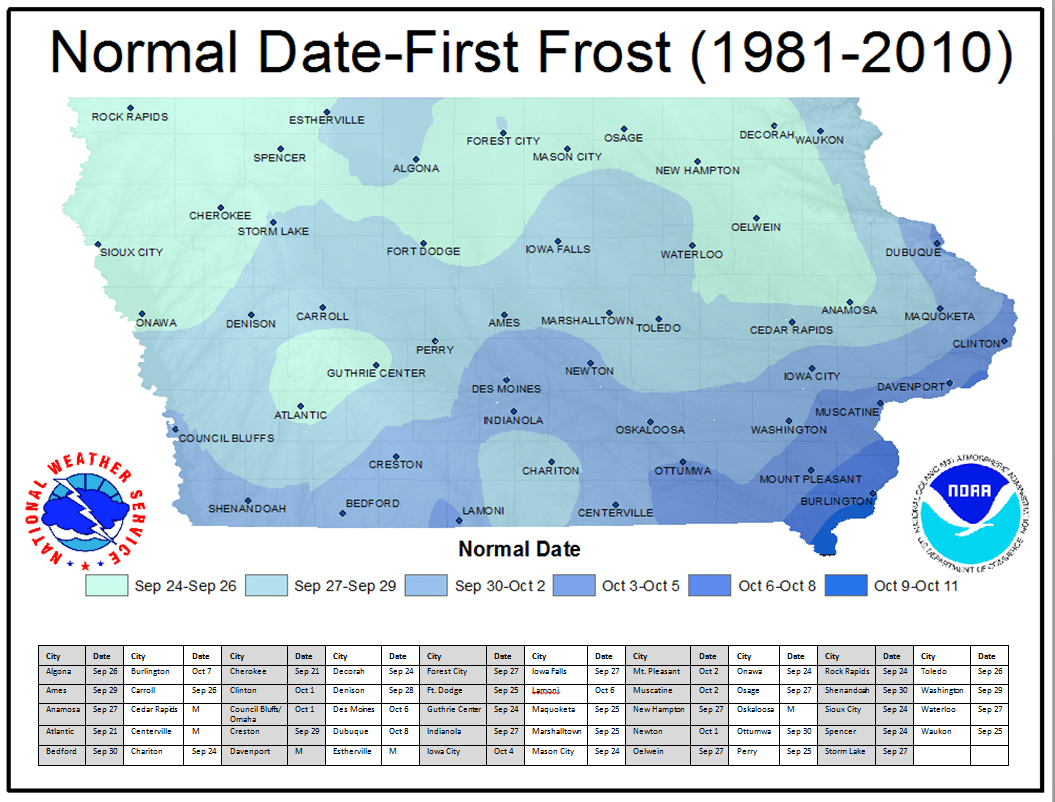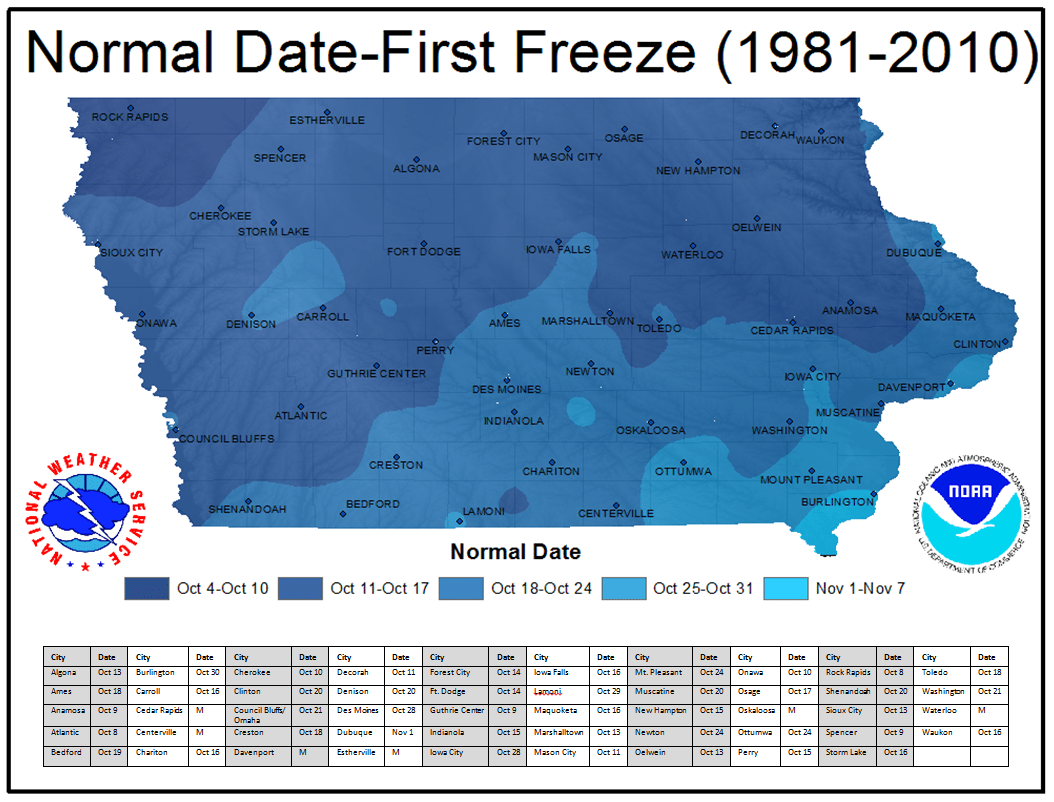
Forecasters with the National Weather Service are expecting a later-than-average first freeze this fall.
Most areas in the state have yet to experience frost due to the warm September and beginning to October. Brad Small with the National Weather Service says there are two key factors in the development of frost.
“We’re looking for dew points below freezing and the temperature of the surface below freezing,” he says. “That can be cooler than what the air temperature is, so that’s why frost often occurs with lows around 34 or 35.”
He says a hard freeze is what typically does more damage to exposed vegetation, with air and surface temperatures well below the freezing mark.

Typically, the first freeze of the season takes place by the middle of October in south Central Iowa.

